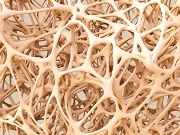Article
New Procedure Improve Efficacy of Bone Marrow Transplants
Author(s):
New method able to reduce toxic side effects by avoiding use of chemotherapy.

Due to the severe toxicity of bone marrow transplantation, the procedure is only used in the most critical cases. However, new research revealed a method to destroy blood stem cells in mice sans chemotherapy or radiotherapy, and may lead to a future change in disease treatment and regenerative medicine.
If the new method is proven safe and effective in humans, it could potentially be used to cure autoimmune diseases, fix congenital metabolic disorders, treat more types of cancer, and make organ transplants safer and more successful. In order to successfully transplant blood stem cells, a patient’s own blood stem cells need to be killed.
The current method used is radiotherapy or chemotherapy, but the treatment is toxic enough that it damages DNA and causes immediate problems and long-term damage to multiple tissues in the body. Treatments can cause damage to the brain, reproductive organs and liver, which can potentially lead to seizures, and impair growth and neurological development in children.
In a study published in Science Translational Medicine, researchers sought to reduce toxic side effects by composing a symphony of biological instruments that could clear the path for blood stem cell transplantation without using chemotherapy or radiotherapy. To start off, researchers used an antibody against the cell surface protein c-kit.
When the antibody was attached to c-kit, it resulted in the depletion of blood stem cells in immune-deficient mice.
“However, this antibody alone would not be effective in immune-competent recipients, who represent a majority of potential bone marrow transplant recipients,” said lead author Akanksha Chhabra, PhD.
To enhance its efficacy, researchers combined it with antibodies that block an additional cell surface protein called CD47. When CD47 was blocked, it resulted in freeing macrophages to attack target cells covered with c-kit antibody.
Once the CD47 marker was blocked and the antibody had attached to c-kit proteins, the immune system was able to effectively deplete the blood-forming stem cells. This cleared the way for donor-transplanted blood stem cells to reside in the bone marrow, and generate a new blood and immune system.
Currently, bone marrow transplants involve a mix of cells that includes blood stem cells, as well as a variety of immune cells from the donor, which can attack the tissue of the transplant recipient. This immune attack results in graft-versus-host disease, which can damage tissues and even result in death.
Study authors noted that with the new method, it was not only a safer way to clear the field for new planting but also a safer technique to seed the new blood-generating cells. Having built upon prior research, scientists purified the donor tissue so that it contained only blood stem cells, and not the immune cells that cause graft-versus-host disease.
“If it works in humans like it did in mice, we would expect that the risk of death from blood stem cell transplant would drop from 20% to effectively zero,” said senior study author Judith Shizuru, MD, PhD.
Once a patient’s blood and immune system can safely be replaced, the diseases that are caused by the patient’s own blood immune cells could potentially be cured through a 1-time application of blood stem cell transplantation, according to researchers.
“If and when this is accomplished, it will be a whole new era in disease treatment and regenerative medicine,” said study co-author Irving Weissman, MD.
If a patient’s blood and immune cells are safely replaced, it will deplete the cells that attack their own tissues and produce diseases, such as type 1 diabetes and rheumatoid arthritis. Additionally, this new method could potentially make organ transplantation both safer and easier.
Current organ transplant patients are required to stay on drugs that keep their immune system from attacking the transplanted organ for the rest of their lives.
“Even if you are on immunosuppressants, most organ transplants diminish in function or fail over time, and the immunosuppressive drugs themselves make the patient more susceptible to life-threatening infections or newly forming cancers,” Weissman said.
Researchers stated that if the blood and immune stem cells from the organ donor could be transplanted at the same time as the organ, the new immune system would recognize the donated organ and not attack it.
“The transplanted cells, the donated organ, and the patient’s own tissues all learn to coexist,” Shizuru said. “The donor blood stem cells re-educate the immune system of the patient, and the transplanted organ doesn’t get kicked out.”






